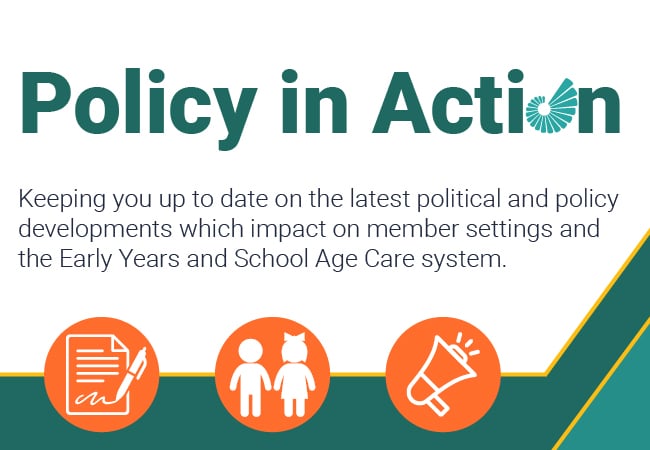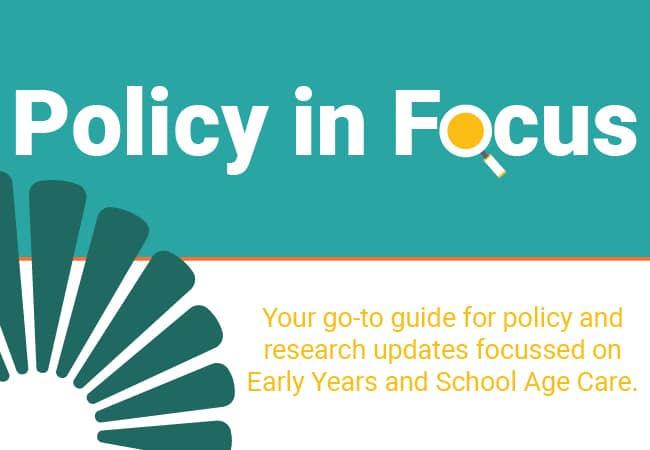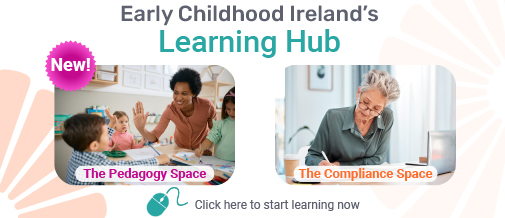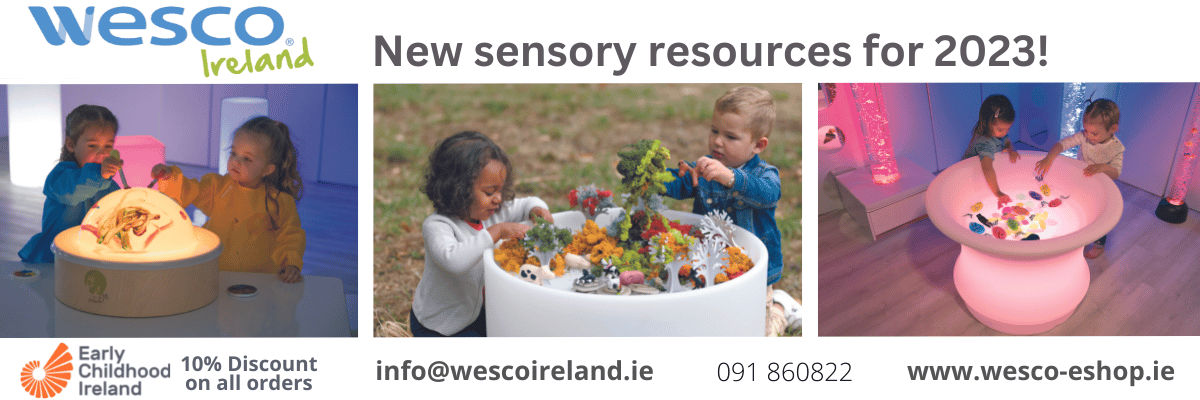Comfort and care

By Máire Corbett
We all need security. Security gives us a feeling of safety, of comfort, of closeness and of predictability and the confidence to be adventurous and explore more. When we feel secure in an environment, we feel more relaxed and more ‘ourselves’. Our wellbeing is heightened by this sense of security. As we know from the work of Ferre Laevers, he identifies wellbeing as a key indicator of quality in Early Years settings.
How do we provide a sense of security and wellbeing, especially for very young children?
For me comfort is a fundamental way in which we enable children to feel secure. We generally, thankfully, provide comfort instinctively and automatically. However, we also value independence. We encourage children to be independent, so they can do things for themselves, and be active participants in their own lives. It is a natural stage of development. We know toddlers want to do things for themselves and we try to support this instinct to enable them to thrive. But as Sue Gerhardt says in her book Why Love Matters (2004) ‘the paradox is that people need to have a satisfying experience of dependency before they can become truly independent and self-regulating’.
We sometimes hear people discouraging us from responding to a distressed baby or toddler with the misplaced theory that letting them cry it out will enable them to learn to be less dependent, to self sooth and to be less ‘demanding’. But, as Sue Gerhardt says, this can in fact have the opposite effect. Children who are not responded to appropriately by the adults who care for them on a frequent basis, may feel less secure, less comfortable, feel adults are not to be trusted and can become more needy and less independent.
Providing comfort consistently
We can provide comfort and security in so many ways. Consistency is so important. As far as is possible the same educators should be with the same babies and toddlers every day. This includes relief and cover staff. If familiar educators are not available, keep changes to a minimum and explain the changes to the children and to their parents, with as much notice as possible. This can be done when an educator is going to be off on holidays, but of course in the case of illness may not always be possible. By having photos of the regular educators in the room, and acknowledging any feeling of distress or loneliness on the part of the young child, security and comfort can be provided.
Predictable routines are also important, but it is also important to be child led. Routines, to me, is the order in which things are done, not a strict timetable of the time at which those things are done. The young child knows that when they arrive in the setting they have breakfast, followed by a story, then outside time, then playing with their key person, and then it’s snack time. Some days this might take an hour, other days it might take two hours, following the child’s lead and interests.
Responding to distress
Responding to children’s distress in a caring sympathetic manner is vital. We may not always understand the cause of the distress, but we can still respond acknowledging that some aspect of the child’s world is not as they think it should be. We are all familiar with the toddler who gets upset because Sasha has the yellow cup, and they want a yellow cup. We get a yellow cup, but the toddler doesn’t want that yellow cup, they want a different yellow cup. It can be frustrating, but we still respond by providing comfort and reassurance to ease the distress. This supports the toddler to trust adults in their world who will be there to help them manage those overwhelming feelings until they are mature enough to do this for themselves.
As we grow older, we do learn to manage our emotions better and to self-regulate. But for all of us, no matter what age we are, aren’t there times when we need someone else to help us if we feel over-whelmed?
Keeping the importance of comfort and security central to the decisions we make about how we care for babies and toddlers is a vital way in which we support high quality for these very young children. The actions we take now in providing affection and closeness to babies and toddlers will last long into their futures.









